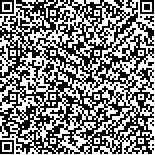| 本文已被:浏览次 下载次 |

码上扫一扫! |
|
|
|
| Reaction of dielectric barrier discharge plasma with starch solution |
|
YU Hong1,LIU Yan-min1,HAN Zhi-de1,HOU Ying-min2,XIU Zhi-long2
|
|
(1. College of Physics Science and Technology in China University of Petroleum f Dongying 257061, Shandong Province, China ;2. Department of Bioscience and Biotechnology, School of Environmental & Biological Science & Technology in Dalian University of Technology , Dalian 116024, Liaoning Province, China)
|
| Abstract: |
| A starch solution sample was exposed in dielectric barrier discharge (DBD) plasma in helium at atmospheric pressure without any additional inorganic acid or enzymes. Tlie micrography of a scanning electron microscope showed that starch particle became small and was easy to aggregate. Hie pH value of the solution was observed by a standard pH meter. With the plasma treatment time extension,the pH value of solution decreased sharply. The pH value was almost same on mater when the sample was analyzed immediately or 2 hours later after plasma exposure. The high performance liquid chromatograph (HPLC) shows that the final hydrolysis product^ include glucose and acetic acid. Compared the degree of starch hydrolyzed by acid and plasma, the latter is more remarkable. Tlie results indicate that the reactive radicals in plasma reacted with the starch and broke the bio-macromolecule, which played a very important role on starch hydrolysis, but the high acid induced by plasma contributed little. |
| Key words: He dielectric barrier discharge plasma starch solution pH value glucose |
|
|